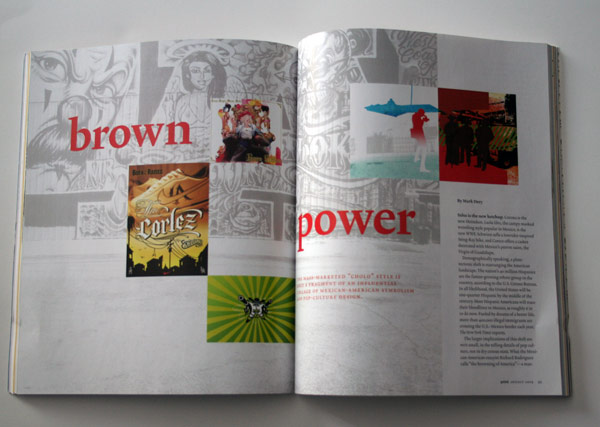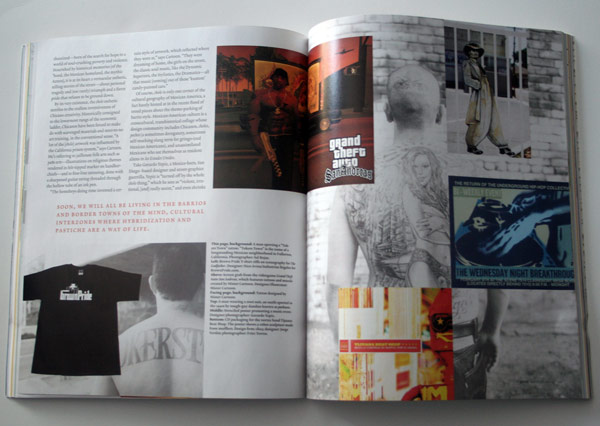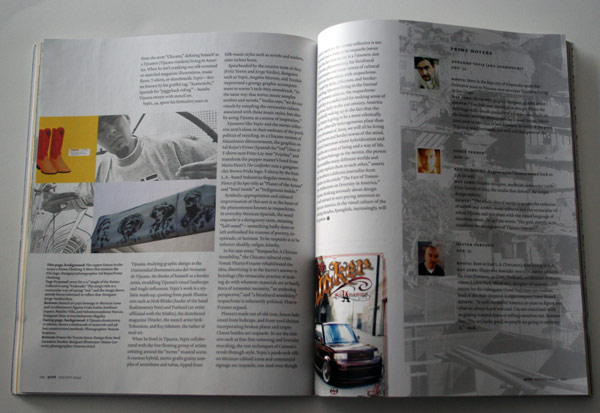|
| |
Brown Power Article by Print Magazine; written by Mark Dery
Brown Power by Print Magazine (Sep/Oct 2005)

The Sept./Oct. 2005 issue of Print magazine includes a feature on Mexican-American visual culture. Written by Mark Dery
Keywords: Mexican-American, Chicano, cholo, pocho, rasquache, rasqauchismo, mestizaje, graffiti art, stencil art, East L.A., San Diego, Tijuana, nortec.
Here's a teaser on the article written by Mary Dery.
(Note: This is a remix of the edited graphs that appear in the Print story.)
More and more, fashion, music, and design are giving props to the barrio culture of East L.A., where Mexican-Americans make up 97 percent of the population. Black-and-silver color schemes, a shout-out to East L.A.'s identification with the down-and-dirty Oakland Raiders, seem to be everywhere, these days. So does the font known as Old English�shorthand, in barrio culture, for authority, an association forged by the use of gothic script for official proclamations in colonial Mexico.
True to form, the America that ignores urban decay in the barrios (as long as their social pathologies don't spill into white neighborhoods) has nonetheless managed to mass-market that badass icon of rebel cool, the cholo, or Chicano gangmember. The mainstream sees real-life gangbangers "as frightening stereotypes: lethal, faceless, and vaguely nonhuman," writes Leon Bing, in Do or Die. But skinning the image of badness and selling it as off-the-rack rebellion is the stuff of marketers' dreams. That's why "mainstream America is learning how to say a new word: cholo," as USA Today gushed in 2003, when the trend first broke. That's why Old English lettering is cropping up on designer gringa-ware such as Gwen Stefani's L.A.M.B line, and even, madre de dios, Gap cords, modeled by Madonna. It's why celebrities such as Eminem, Beyonce, and Justin Timberlake of N-Synch (!) are making pilgrimages to L.A.'s inner-city badlands to get one of Mister Cartoon's tattoos, done in the black-and-gray "fine-line" style originated by cholo gang members behind bars.
From the other side of the neighborhood line, marketers' crossover dreams can look like cultural imperialism, to resurrect a phrase from more radical times. And for those who strike the devil's bargain of selling the look and feel of their own culture, those dreams can taste like sellout.
Official Print Magazine Website




|
|
|
|




